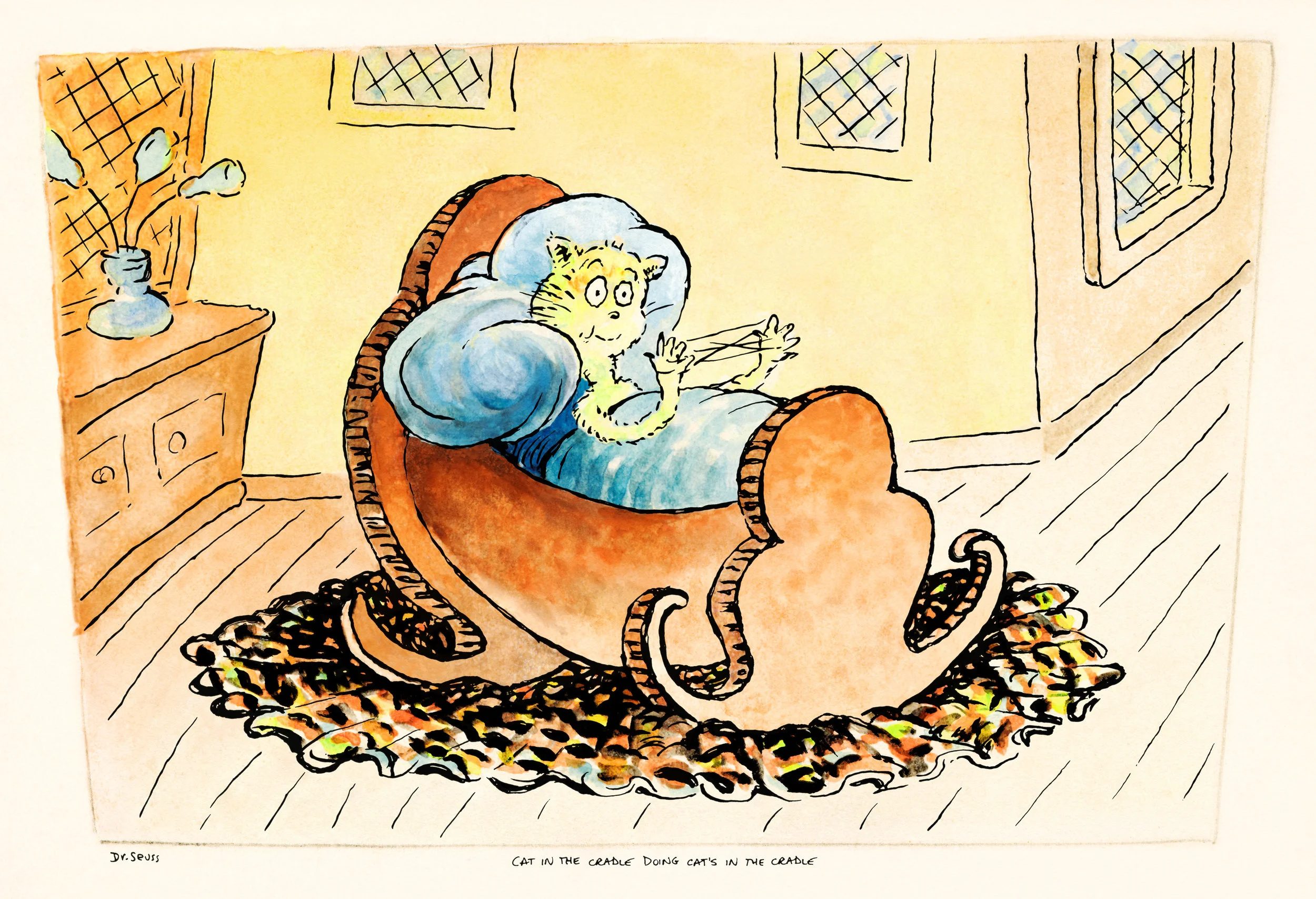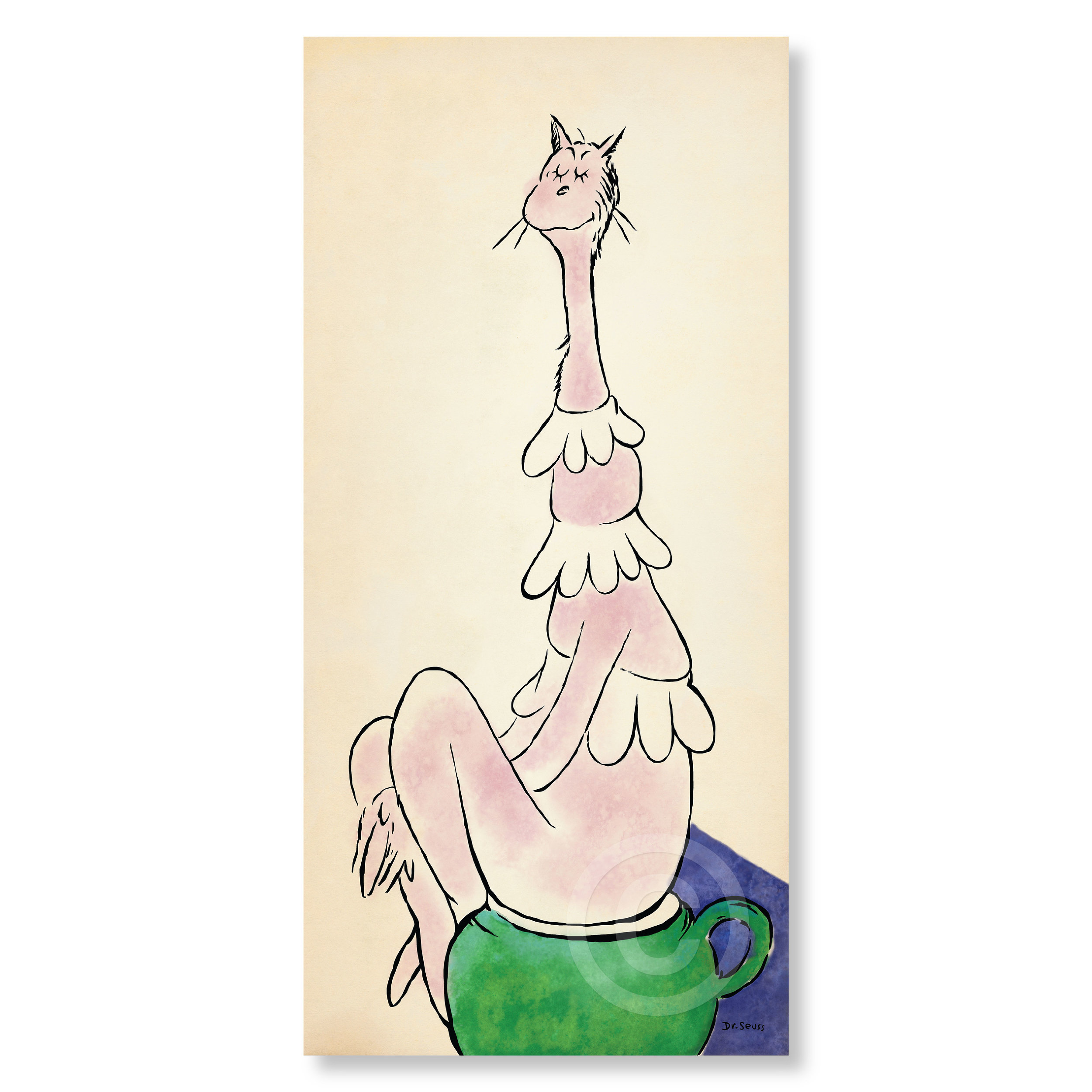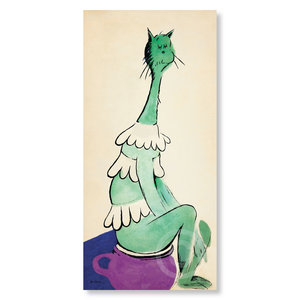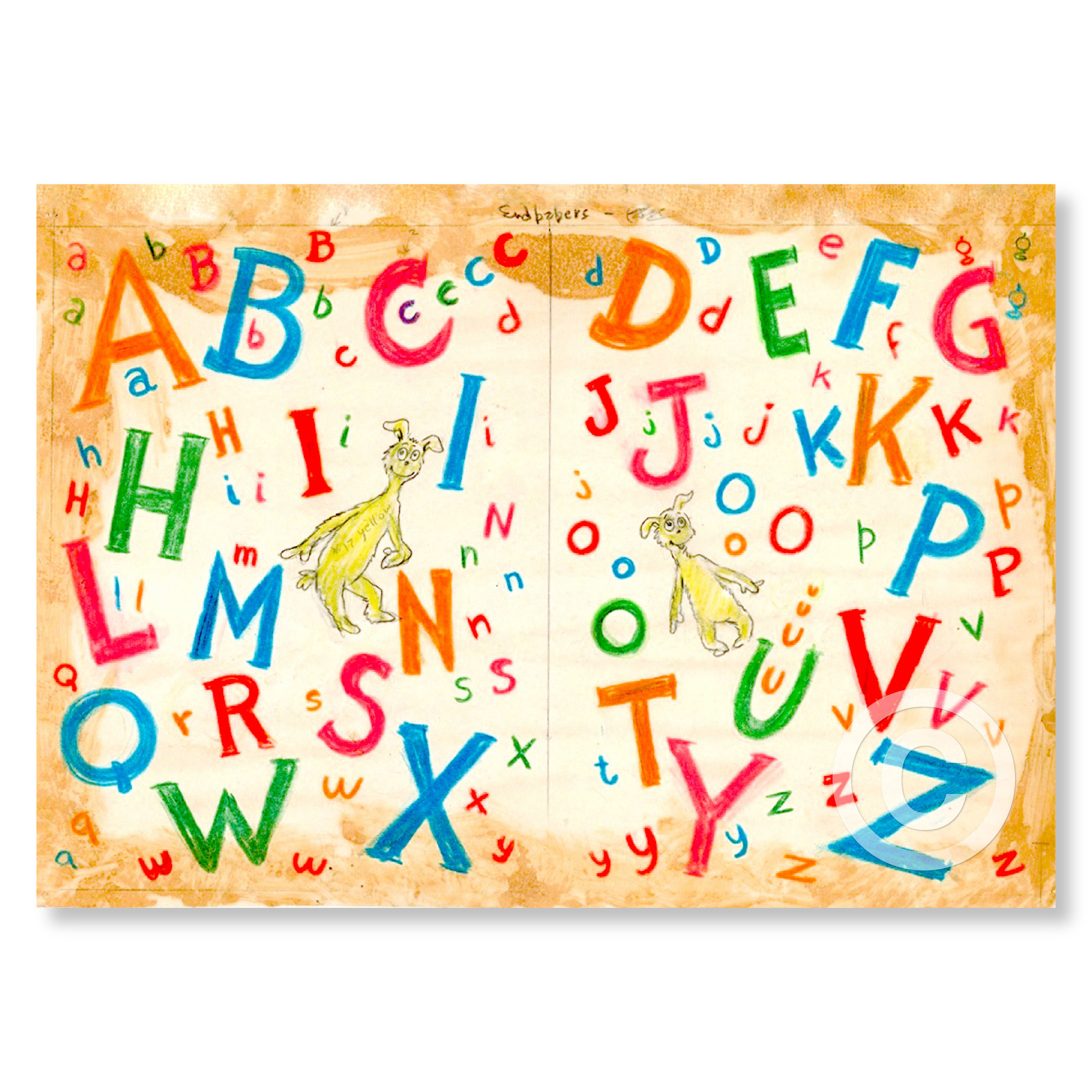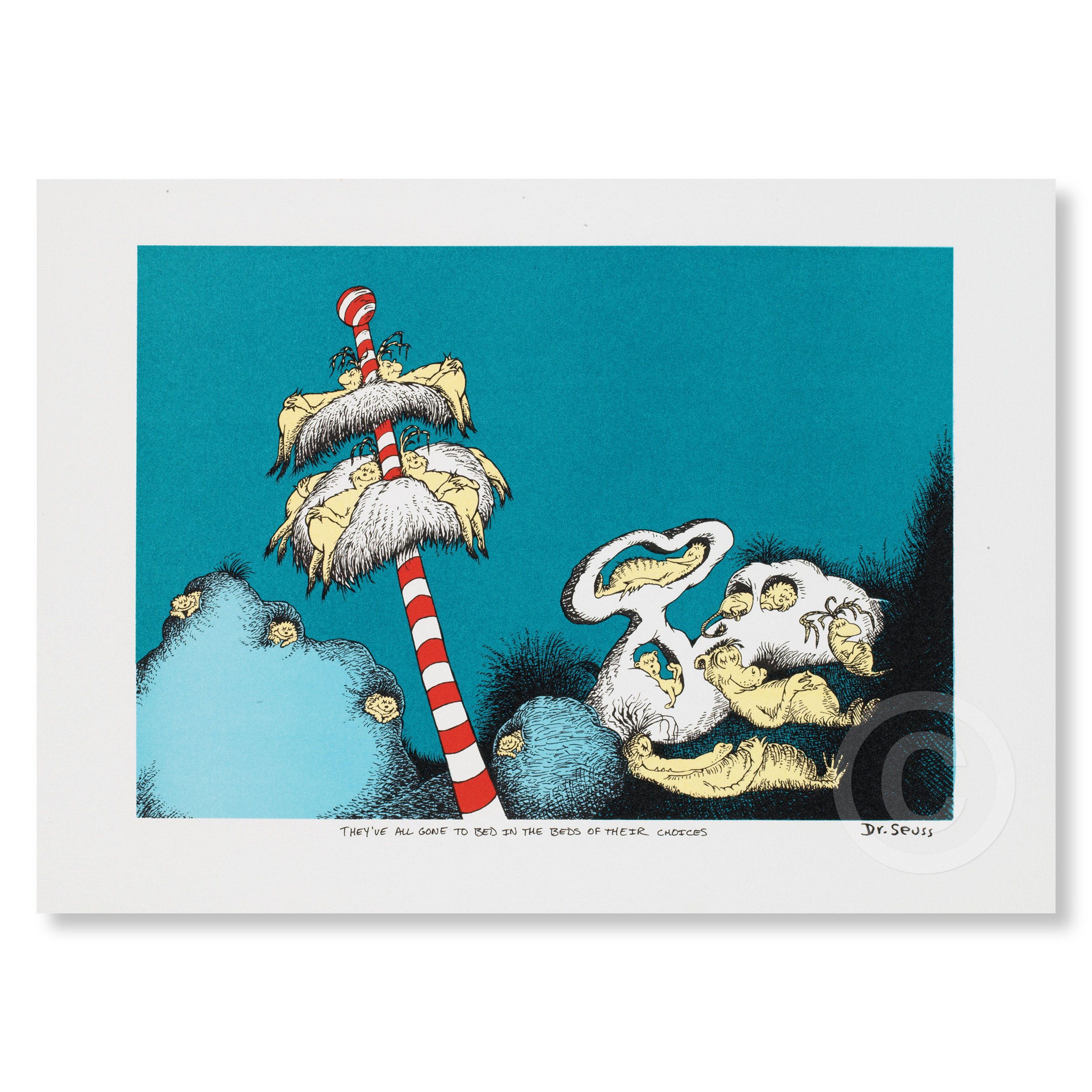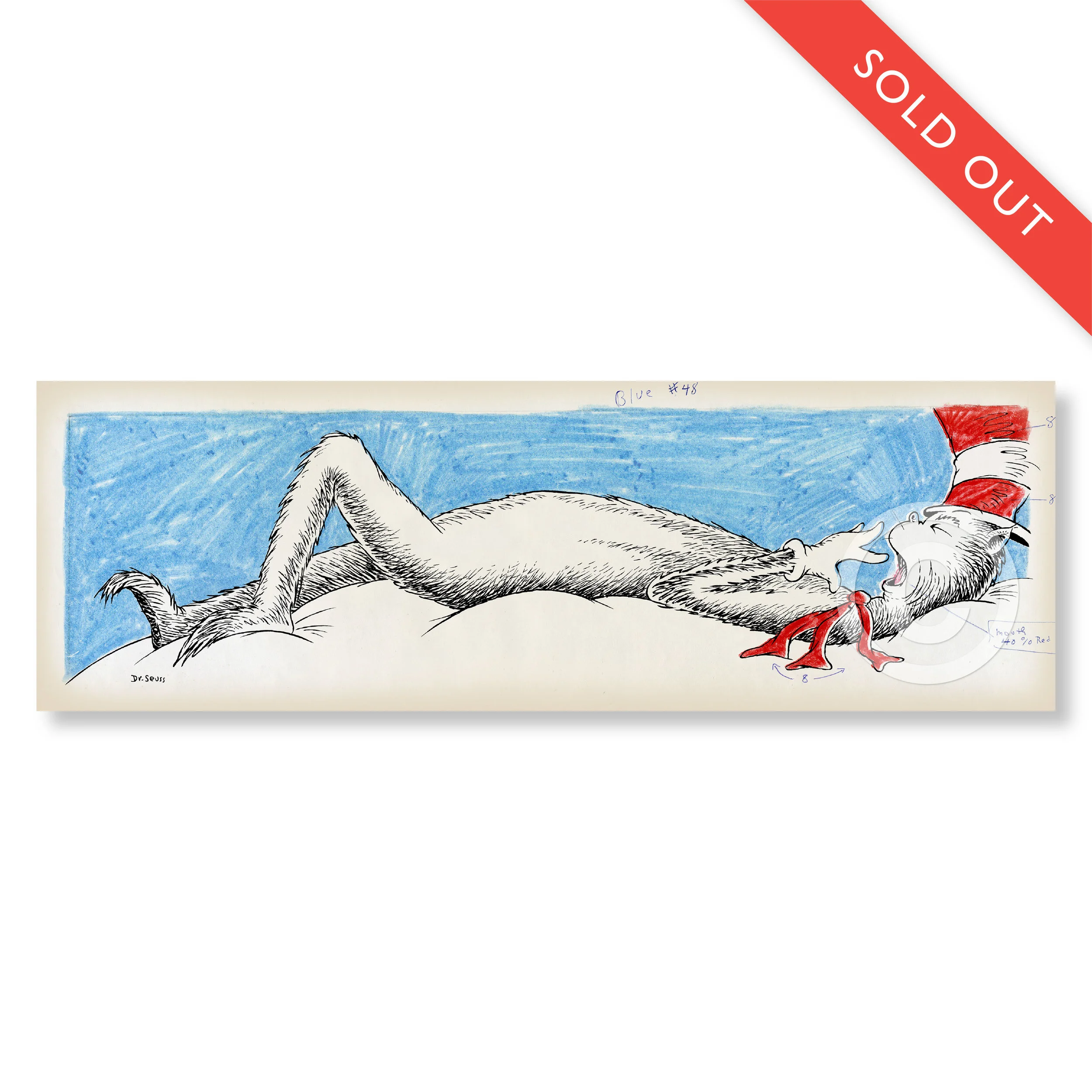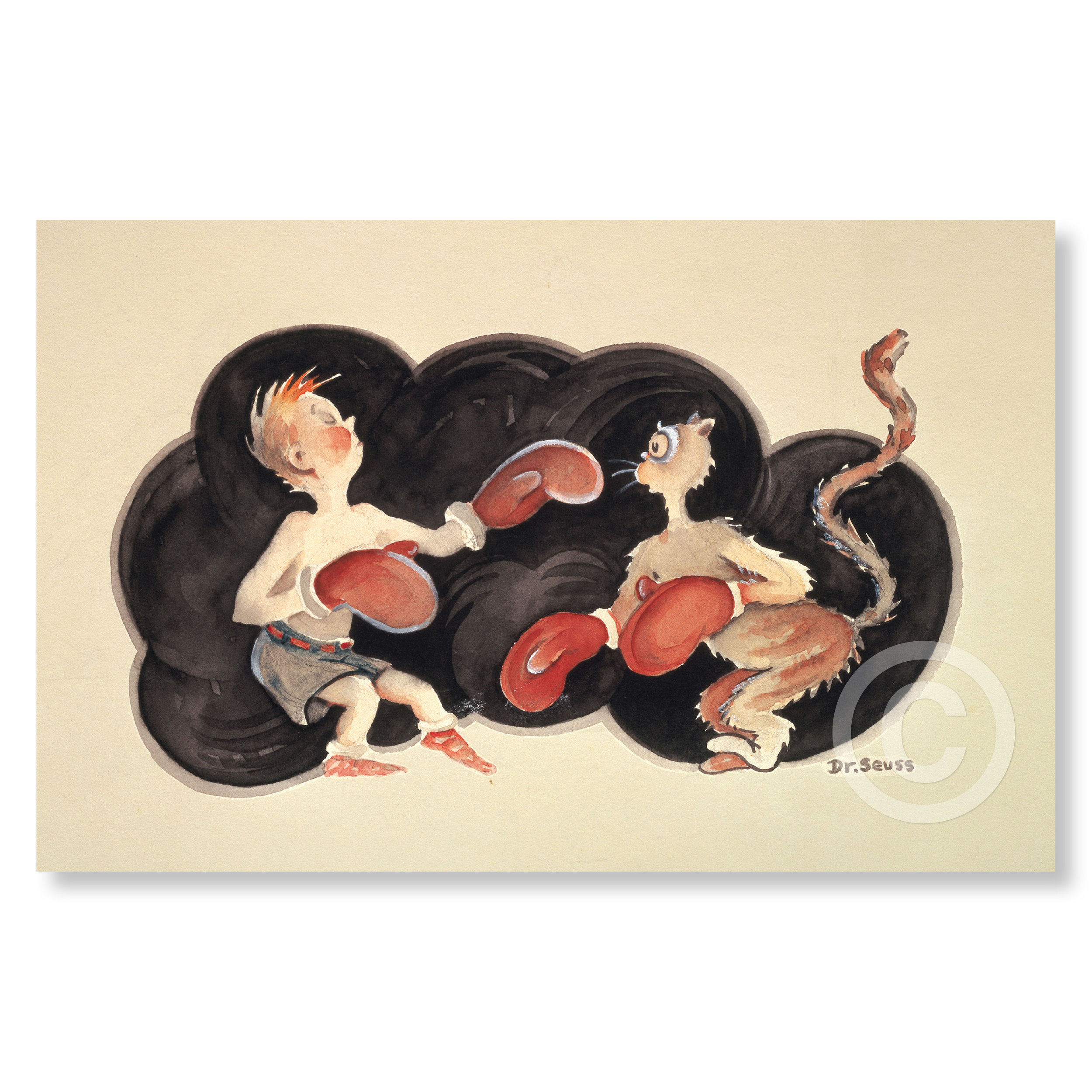CAT IN THE CRADLE DOING CAT’S IN THE CRADLE
Cat in the Cradle Doing Cat’s in the Cradle
Mixed-Media Pigment Print on Archival Paper
Image Size: 18.5” x 29”, Paper Size: 21.5” x 31”
Limited Edition of 850 Arabic Numbers, 99 Patrons’ Collection, 155 Collaborators’ Proofs, 5 Hors d’Commerce, and 2 Printer's Proofs
““I like nonsense, it wakes up the brain cells. Fantasy is a necessary ingredient in living. It’s a way of looking at life through the wrong end of a telescope. Which is what I do. And that enables you to laugh at life’s realities.””
The sentiment above was present throughout Ted Geisel’s (aka Dr. Seuss) 60 years of paintings, drawings, and sculpture. To further this sense of fantasy and nonsense, Ted employed his hallmark technique of marrying text and imagery in his work.
Here, upon first glance, we see a young cat laying in a cradle. Upon a closer look, however, we see the cat engaged in one of the oldest games ever recorded in human history—Cat’s Cradle. Ted’s title then brings the two together and pushes the sense of whimsy to its extreme.
“Much of Ted’s artwork, including private paintings like this rare image, seems to hint at the way Ted believed we all should live our lives. To “laugh at life’s realities” is a quality he often felt was lost on adults. Through his artwork and text, Ted set out to create a body of work that infused our lives with laughter, fantasy, and a dose of nonsense that he felt was just what the doctor ordered.”
AN INTIMATE AND RARE WORK
This work is one of the rarest in The Art of Dr. Seuss Collection. It was first seen by the public in Secrets of the Deep, a large-scale retrospective book published 15 years after the first private paintings made their appearance in a smaller monograph titled The Secret Art of Dr. Seuss.
Ted and his wife Audrey had hung this work above a mantle in their bedroom where the work remained throughout Audrey’s life. This painting had struck an intimate and personal chord, perhaps because of its subject matter, or maybe because of its exemplary manifestation of Ted’s core beliefs as described above.

